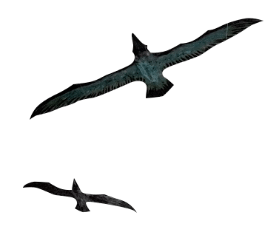For the many of us who have read Sigrid Undset’s 1920’s classic medieval novel, “Kristin Lavransdatter,” what remains indelible in our collective memory is the iconic wedding scene, when the glimmering ancestral bridal crown is ceremoniously placed upon Kristin’s head. Not to spark a debate about Undset’s historical accuracy, but the wedding crown described—the one we think of when we conjure up a “traditional” Norwegian bride—didn’t actually become traditional until many centuries later. Instead, most brides would have worn some version of a “lad”—an ancient textile headdress, of varying dimensions and shapes, with silver-gilt ornaments.
In the parish of Tinn, Telemark, for at least several centuries, a tall hat was worn by the bride: covered in red wool, trimmed with silver bobbin lace, festooned with colorful ribbons and gold woven bands, upon which silver-gilt chain—søljer—and other ornaments were sewn. In 1853, Ingebjorg Volun was married wearing this type of bridal hat—possibly the last bride in the valley of Tinn to do so before it went out of use.
Fast forward to the early 1990’s: While working as an apprentice to Hilde Nødtvedt, the master silversmith in residence at the Norwegian Folk Museum in Oslo, I became fascinated by the Tinn bridal hat held in the museum’s collection. This is the only known example, as all others were presumably dismantled and incorporated into other items after they went out of use. Kari-Anne Pedersen, Curator of Costumes and Textiles at the Norwegian Folk Museum, who was at that time an ethnology student at the university, and I began making plans to remake this extraordinary hat. We finally accomplished this task, and along with the reconstructed folk dress from Tinn, the “skjælingstakk,” the bridal hat made its debut in 1994 at my first one-person exhibition at the Nordic Heritage Museum in Seattle.
In 2000, the bridal hat we made was worn for the first time in nearly 150 years at Volun farm, in Tinn, Telemark. What is more remarkable is that the bridegroom, Hans Vaalund, is the great-great grandson of Ingebjorg Volun—presumably the last bride to have worn the hat in the mid-19th Century. After this, the bridal hat slowly came back into use as others were made. Today, it is not unusual to see a bride from Tinn wearing this beautiful hat on her wedding day.
For more information about the Tinn bridal hat, folk costumes, textiles, jewelry, and bridal crowns, follow the links below.
- https://norskfolkemuseum.no/en/folk-dress
- https://digitaltmuseum.no/
- https://bunadogfolkedrakt.no/
- https://hildesolv.no
Sources:
Berg, Rikard. Norskt Bondesylv. 1997 (facsimile from original, 1925)
Fossberg, Jorunn. Draktsølv. Universitetsforlaget 1991
Noss, Aagot. Klesskikk I Tinn I Telemark: Frå Tinndølkene til Tinnbunad. Novus Forlag, 1999
Noss, Aagot. Adolph Tidemand og Folk Han Møtte. Universitetsforlaget 1981
Noss, Aagot. Lad of Krone: Frå Jente til Brur. Universitetsforlaget 1991
Images:
- Bridal hat, Tinn, Telemark. Photo: Norwegian Folk Museum, Oslo
- Bodice of Skjælingstakk with jewelry. Photo: Norwegian Folk Museum, Oslo
- Bride, Anne Camilla Valuund, with bridal hat: textiles by Kari-Anne Pedersen, ornaments by Lori Talcott. Photo: Lori Talcott
- Bride and groom, Anna Camilla and Hans Vaalund, Volun Farm, Tinn, Telemark. Photo: Lori Talcott
- Bride and groom, Anna Camilla and Hans Vaalund. Photo courtesy Anna Camilla and Hans Vaalund
- Bride from Tinn, Telemark. Watercolor by John Christian Dahl, 1826
Lori Talcott is a Seattle-based visual artist, the fourth generation in a family of jewelers and watchmakers. Through the format of jewelry, her work and research engage with contemporary theories on magic, object agency, and the nexus of language and matter. Her performance projects explore the role of jewelry as a rhetorical device, and in this capacity, how it functions as an agent in rituals that negotiate social, temporal, and spiritual boundaries.
Lori Talcott www.loritalcott.com | @loritalcott


